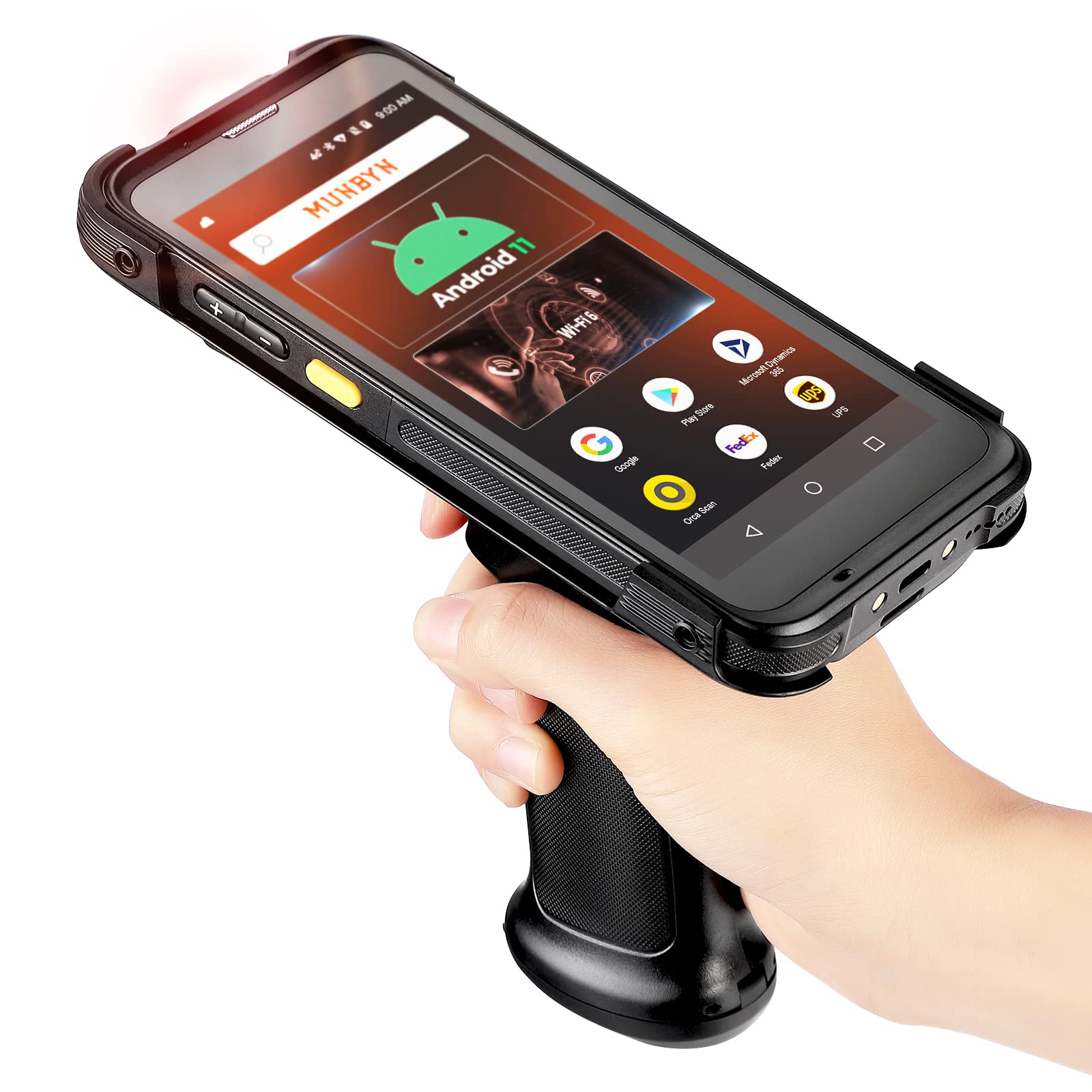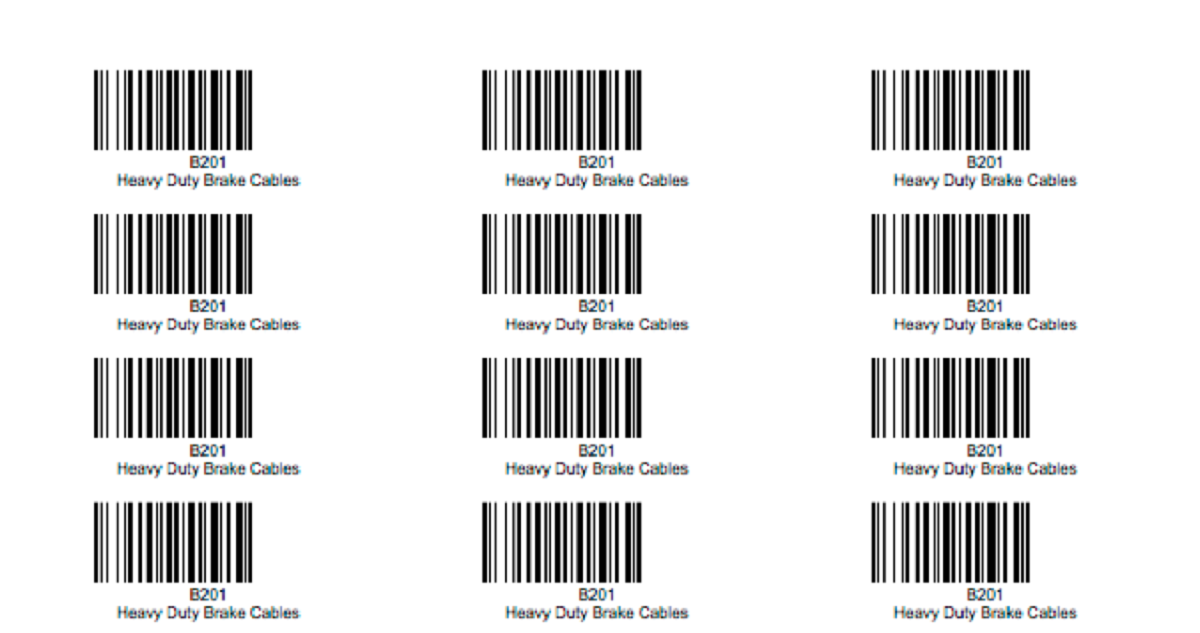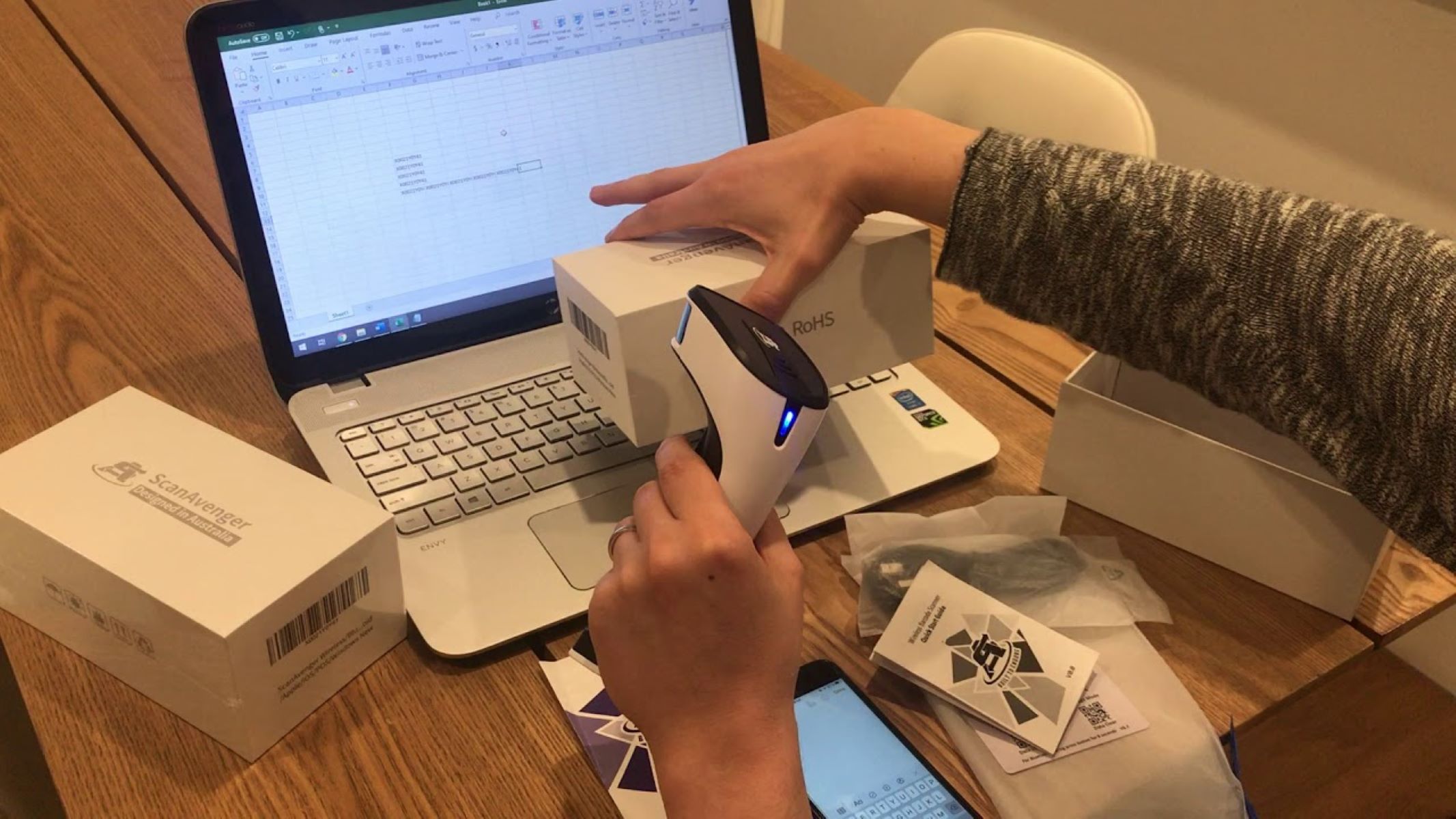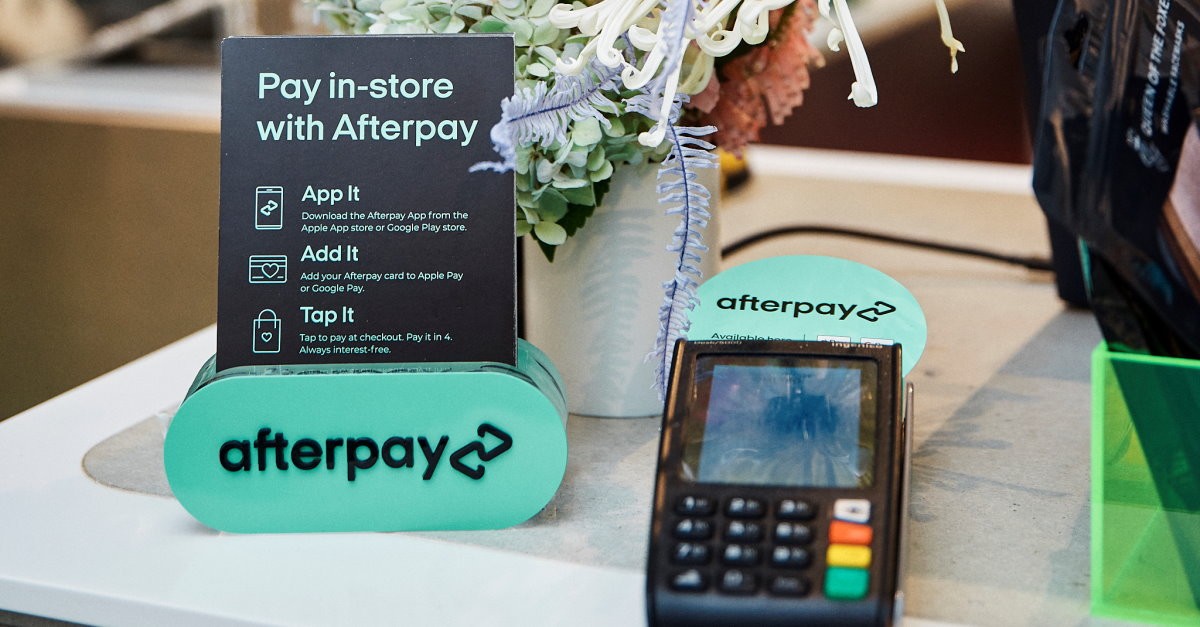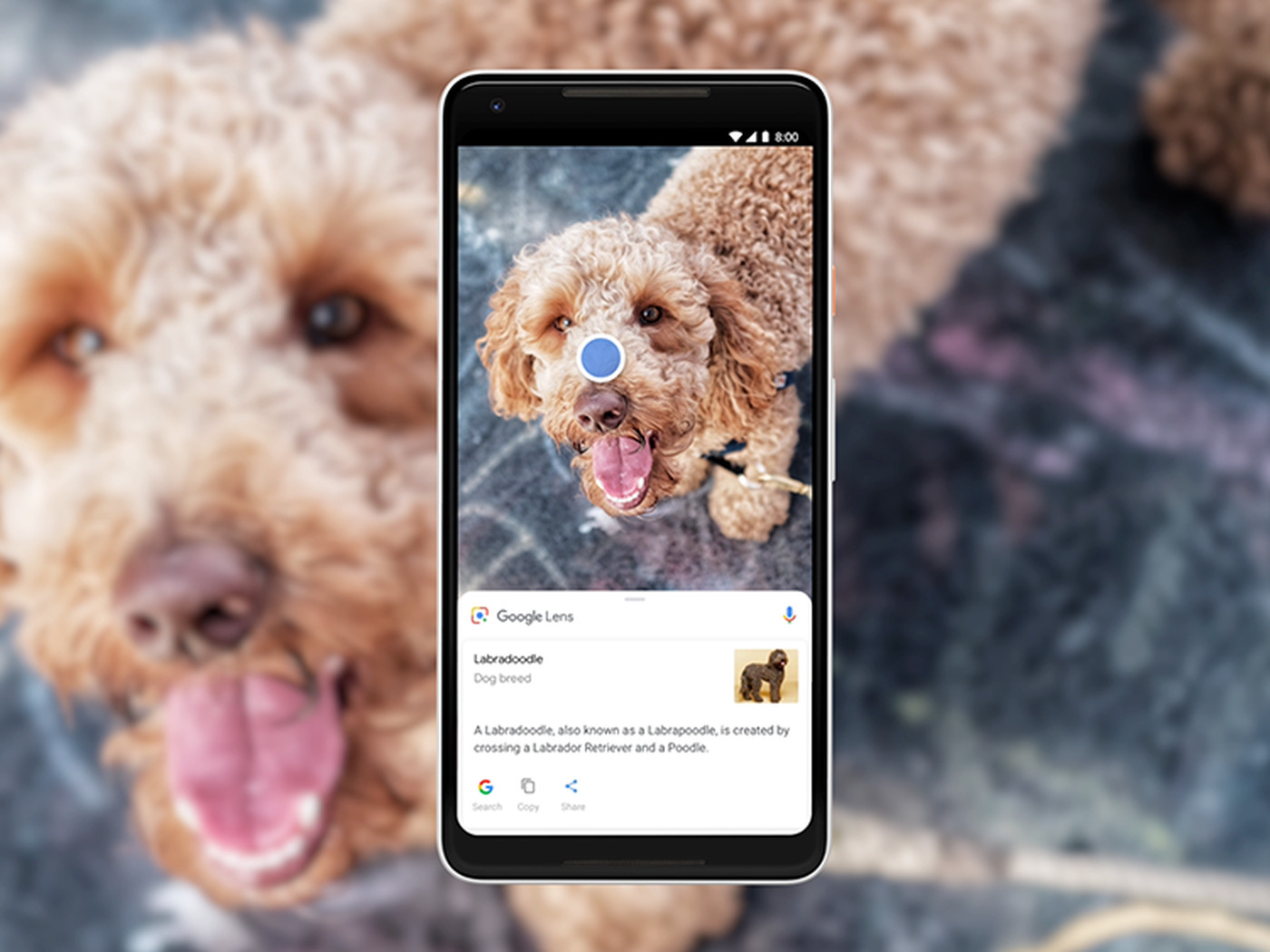Introduction
Welcome to the world of smartphones and barcodes! In today’s digital age, almost everyone owns a smartphone, and these devices are not just limited to making calls or sending messages anymore. With the power of technology, smartphones have become a versatile tool that can be utilized for various tasks, including scanning barcodes.
But what exactly is a barcode? In simple terms, a barcode is an optical representation of data that can be easily scanned by a barcode scanner. It consists of vertical lines and spaces of varying widths that encode specific information, such as product details, prices, or tracking numbers.
So why should you use your smartphone to scan barcodes? The answer is simple – convenience. With a barcode scanning app installed on your smartphone, you can quickly and effortlessly scan barcodes wherever you are. Whether you’re shopping at a store, comparing prices, or managing inventory, using your smartphone as a barcode scanner can save you time and effort.
There are different types of barcodes, each serving a specific purpose. The most common type is the Universal Product Code (UPC), which is used in retail stores and online shopping platforms. Other types include the QR code, which can store more information and is widely used for marketing and digital content. With a smartphone equipped with a barcode scanning app, you can scan various types of barcodes and extract the encoded data easily.
Now that you understand the benefits of using your smartphone to scan barcodes, the next step is finding a reliable barcode scanning app. There are numerous apps available for both Android and iOS devices, and it’s essential to choose one with a user-friendly interface and reliable scanning capabilities.
Once you have installed a barcode scanning app, you’ll be ready to start scanning barcodes with your smartphone. In the following sections, we will guide you through the steps of scanning a barcode and provide tips for successful scanning. We will also explore different ways you can utilize scanned barcodes, from organizing your personal collection to accessing digital content or tracking shipments.
What is a barcode?
A barcode is a visual representation of data in the form of a series of black bars and white spaces of varying widths. It is designed to be easily scanned by a barcode reader or scanner, which translates the information encoded in the barcode into readable text or numbers.
Barcodes are widely used in various industries, including retail, logistics, manufacturing, and healthcare, to streamline processes and improve efficiency. They serve as a unique identifier for products, items, or entities, enabling accurate tracking, inventory management, and information retrieval.
The most common type of barcode used today is the Universal Product Code (UPC). You can find these barcodes on almost every packaged product in retail stores. Each barcode consists of a series of numbers, which identify the product and provide information such as the manufacturer and product variation.
Another popular type of barcode is the QR code. QR codes are two-dimensional barcodes that can store a much larger amount of information compared to traditional barcodes. They are square-shaped and consist of black modules arranged on a white background. QR codes gained popularity due to their versatility and ability to store URLs, text, contact information, or even multimedia content.
Barcodes can be printed on various surfaces, including product packaging, labels, and tickets. They can also be displayed digitally on screens, making them accessible through smartphones or other scanning devices. This versatility allows barcodes to be used in different contexts, from retail point-of-sale systems to mobile ticketing and digital marketing campaigns.
When a barcode is scanned using a compatible device or app, the scanner captures the pattern of bars and spaces and translates it into a readable format. This process is done through optical recognition technology, where the scanner detects the contrasting colors and widths to decode the information embedded in the barcode.
Overall, barcodes are an essential tool in today’s technology-driven world. They facilitate accurate and efficient data capture, improve inventory management, and contribute to seamless customer experiences. With the widespread use of smartphones, anyone can easily scan and decode barcodes using dedicated scanning apps, unlocking a whole new level of convenience and access to information.
Why use a smartphone to scan barcodes?
In an era where smartphones have become an indispensable part of our lives, it only makes sense to utilize their capabilities for barcode scanning. Here are several reasons why using a smartphone to scan barcodes is advantageous:
- Convenience: Almost everyone carries a smartphone with them these days, and having a barcode scanning app on your device means that you have a portable and always available barcode scanner at your fingertips. No need to carry around additional hardware or bulky scanners.
- Cost-effective: Dedicated barcode scanners can be pricey, especially if you only need to scan barcodes occasionally. By using your smartphone as a scanner, you eliminate the need for an additional device and can save money.
- User-friendly interfaces: Barcode scanning apps are designed to be intuitive and easy to use, even for those who may not be tech-savvy. With a few taps on your smartphone screen, you can scan a barcode and retrieve the encoded information quickly.
- Scanning capabilities: Smartphones are equipped with powerful cameras and image recognition technology, allowing them to capture barcodes accurately. The scanning apps utilize advanced algorithms to quickly identify and decode barcodes, providing fast and reliable results.
- Multi-purpose functionality: Unlike dedicated barcode scanners, smartphones are incredibly versatile devices that can perform numerous tasks. By using your smartphone as a barcode scanner, you can have access to other useful features simultaneously, such as price comparisons, product reviews, or online shopping.
- Integration with other apps: Barcode scanning apps often provide integration with other applications and platforms, allowing you to seamlessly import or share the scanned barcode data with other apps, such as inventory management systems, shopping lists, or digital wallet apps.
- Real-time updates and information: With a smartphone, you can scan barcodes on the go and instantly access up-to-date information related to the product or item. This can include pricing, availability, customer reviews, or additional product details.
Using a smartphone as a barcode scanner combines the convenience and power of modern technology with an everyday device that most people already own. It offers a cost-effective and user-friendly solution for scanning barcodes and opens up a world of possibilities for efficient and seamless data capture in various industries and everyday scenarios.
Types of barcodes
Barcodes come in various types, each serving a specific purpose and offering unique benefits. Understanding the different types of barcodes can help you choose the right one for your specific needs. Here are some commonly used types of barcodes:
- UPC (Universal Product Code): The Universal Product Code, or UPC, is the most widely recognized barcode type. It is primarily used in retail and consumer goods industries to track products and facilitate point-of-sale transactions. UPC barcodes consist of a series of numbers and are commonly found on product packaging.
- QR (Quick Response) Code: QR codes are two-dimensional barcodes that can store a large amount of information compared to traditional barcodes. They are square-shaped and consist of black modules arranged on a white background. QR codes can be scanned using a smartphone and are commonly used for marketing purposes, allowing users to access websites, promotional offers, or additional product information.
- Code 39: Code 39 barcodes are alphanumeric barcodes that can encode uppercase letters, numbers, and a few special characters. They are widely used in logistics, inventory management, and healthcare applications. Code 39 barcodes can be easily generated and scanned from a variety of surfaces, making them versatile and cost-effective.
- Data Matrix: Data Matrix barcodes are two-dimensional barcodes that can store a large amount of information in a small space. They consist of black and white squares arranged in a square or rectangular pattern. Data Matrix barcodes are commonly used for small-scale product labeling, asset tracking, and document management.
- EAN (European Article Number): EAN barcodes are a variation of the UPC barcode system primarily used in Europe. They are similar to UPC barcodes but have different country codes. EAN barcodes are widely used in retail and logistics for identifying products and streamlining supply chain operations.
- Code 128: Code 128 barcodes are high-density, variable-length barcodes that can encode alphanumeric characters. They are commonly used in shipping and packaging industries for labeling products and tracking shipments. Code 128 barcodes can store a large amount of data and provide high data density.
These are just a few examples of the types of barcodes available. The choice of barcode type depends on the specific application you have in mind and the information you need to encode. It’s important to select the appropriate barcode type that aligns with your requirements to ensure efficient and accurate scanning and data retrieval.
Finding a barcode scanning app
With the abundance of smartphone apps available, finding a reliable barcode scanning app can seem overwhelming. However, with a little research and consideration, you can easily find the perfect app to meet your barcode scanning needs. Here are some tips to help you find the right barcode scanning app:
- Compatibility: Ensure that the barcode scanning app is compatible with your smartphone’s operating system. Most apps are available for both Android and iOS, but it’s always worth double-checking before downloading.
- User reviews: Pay attention to user reviews and ratings of barcode scanning apps. Look for apps that have positive feedback and a good reputation for accuracy and reliability.
- Features: Consider the features you need in a barcode scanning app. Some apps provide additional functionalities such as price comparison, product reviews, or inventory management. Determine which features are essential for your specific use case.
- User interface: Look for an app with a user-friendly interface and intuitive design. You want an app that is easy to navigate and provides a seamless scanning experience.
- Scan speed: Scan speed is crucial when it comes to barcode scanning. A good barcode scanning app should quickly capture and decode the barcode, allowing you to retrieve the information without delays.
- Supported barcode types: Ensure that the app supports the barcode types you anticipate encountering. Different apps may have varying degrees of compatibility with different barcode formats.
- Additional functionalities: Consider whether you need any additional functionalities, such as batch scanning, history tracking, or data exporting. Some apps offer advanced features that can enhance your barcode scanning experience.
- Integration: If you plan to integrate the barcode scanning app with other applications or systems, make sure it provides the necessary integration options and compatibility.
Once you have narrowed down your options based on these considerations, it’s a good idea to try out a few apps before settling on one. Most barcode scanning apps are free or offer a free trial period, allowing you to test their performance and determine which one suits your needs best.
Remember, the goal is to find a reliable barcode scanning app that meets your specific requirements, enhances your scanning experience, and provides accurate and timely results. Take the time to research and test different apps, and soon you’ll find the perfect one for all your barcode scanning needs.
Steps to scan a barcode using a smartphone
Scanning a barcode using your smartphone is a straightforward process. Follow these simple steps to scan a barcode with your smartphone:
- Download a barcode scanning app: Go to your smartphone’s app store and search for a barcode scanning app. Choose a well-rated and reliable app that suits your needs. Download and install the app on your smartphone.
- Open the barcode scanning app: Tap on the barcode scanning app icon to open it. Allow the app to access your smartphone’s camera when prompted.
- Position the barcode within the scanning area: Hold your smartphone steady and position the barcode within the scanning area. This area might be indicated by a rectangular overlay on the screen or specified by the app’s instructions.
- Align the barcode with the scanning area: Adjust the position and angle of your smartphone, so the barcode is aligned with the scanning area. Make sure the entire barcode is within the frame and well-lit.
- Tap the scan button: Depending on the app, there might be a dedicated scan button or an automatic scan feature. Tap the scan button, and the camera will capture an image of the barcode.
- Wait for the app to decode the barcode: The app will analyze the captured image, decode the barcode, and retrieve the encoded information. This can happen instantly or take a few seconds, depending on the app’s performance.
- View the results: Once the barcode is decoded, the app will display the information associated with the barcode on your smartphone’s screen. This can be product details, pricing, reviews, or any other relevant information.
- Take appropriate action: Based on the information provided by the app, you can take appropriate action. This might include making a purchase, comparing prices, adding the item to a wishlist, or simply gathering information for later reference.
- Repeat the process if necessary: If you need to scan more barcodes, simply repeat the process by positioning each barcode within the scanning area and following the same steps.
Remember to follow any specific instructions provided by the barcode scanning app you are using, as different apps may have slight variations in their scanning process.
By following these steps, you can easily scan barcodes using your smartphone and leverage the convenience and efficiency of barcode scanning wherever you go.
Tips for successful barcode scanning
Scanning barcodes with your smartphone can be a convenient and efficient process. To ensure successful barcode scanning, consider the following tips:
- Good lighting: Scan barcodes in well-lit environments to ensure clear and accurate readings. Avoid scanning in dimly lit areas or in direct sunlight, as it can affect the visibility of the barcode.
- Position and angle: Position your smartphone parallel to the barcode, ensuring that the entire barcode is within the frame. Hold the smartphone steady and avoid tilting it excessively.
- Focus and clarity: Make sure the barcode is in focus by tapping on the screen to activate the autofocus feature of your smartphone’s camera. This will ensure a clear image of the barcode for accurate scanning.
- Steady hand: Keep your hand steady while scanning to avoid blurry images. Use both hands or rest your phone against a stable surface if necessary to maintain stability.
- Remove obstructions: Ensure there are no obstructions, such as reflections, smudges, or scratches on the barcode, as they can interfere with scanning accuracy. Clean the barcode or adjust the position of your smartphone if needed.
- Check app settings: Review the settings of your barcode scanning app to ensure they are optimized for the best scanning results. Adjust the focus, scanning speed, or barcode sensitivity settings if available.
- Scan multiple times if needed: If the first scan does not yield accurate results, try scanning the barcode multiple times from slightly different angles or distances. Some barcodes may require multiple attempts for successful decoding.
- Barcode type compatibility: Ensure that the barcode scanning app you are using supports the particular barcode type you are scanning. Different barcode types may require specific apps or configurations for successful scanning.
- Keep the barcode intact: Avoid damaging or tampering with the barcode, as any missing or distorted sections may prevent successful scanning. Preserve the barcode’s integrity for accurate reading.
- Use high-quality images: If you need to share scanned barcodes or use them for further processing, ensure that the images captured by your smartphone’s camera are of high quality. This will ensure clarity and legibility in subsequent actions or analyses.
Following these tips will increase the likelihood of successful barcode scanning and help you avoid common scanning issues. Practice and experiment with different techniques to find the best approach for your specific smartphone and barcode scanning app.
Remember that successful barcode scanning may also depend on barcode quality, proper encoding, and other factors. In some cases, barcode scanning may not be possible due to damaged or unscannable barcodes.
Using scanned barcodes for different purposes
Scanned barcodes can be utilized for a variety of purposes beyond simple product identification. Here are some common ways to use the information obtained from scanned barcodes:
- Price comparison: Use the scanned barcode to compare prices at different retailers or online platforms. This enables you to find the best deal and make informed purchasing decisions.
- Product information: Scanned barcodes provide access to detailed product information, including specifications, user reviews, and ratings. This allows you to research and gather relevant details about a product before making a purchase.
- Inventory management: By scanning barcodes, businesses can easily track and manage their inventory levels. It helps streamline operations, reduce manual errors, and ensure accurate stock control.
- Digital content access: QR codes, in particular, often link to websites, promotional offers, or multimedia content. By scanning a QR code, you can access exclusive digital resources or experiences related to a particular product or brand.
- Loyalty programs: Many loyalty programs utilize barcode scanning to track and reward customer purchases. Scanning barcodes associated with loyalty cards or apps allows you to accumulate points, redeem rewards, or receive personalized offers.
- Personal collection organization: Scanning barcodes can help you organize your personal collections, such as books, DVDs, or music albums. By scanning the barcodes, you can catalog your collection and easily retrieve information about each item.
- Accessing event tickets: Many event tickets now come with scannable barcodes. By scanning the barcode on your smartphone at the event venue, you can quickly gain entry and eliminate the need for physical tickets.
- Tracking shipments: Scanned barcodes on shipping labels or delivery receipts allow you to track the progress of your packages. By scanning the barcode, you can access real-time updates on the location and status of your shipment.
- Asset management: Organizations can use barcode scanning to track and manage their assets, such as equipment, tools, or vehicles. Scanning barcodes attached to assets simplifies inventory control and maintenance tracking.
- Product recalls: Scanned barcodes can be used to determine if a particular product is subject to a recall or safety alert. By scanning the barcode, you can quickly check if there are any known issues or warnings associated with the product.
These are just a few examples of how scanned barcodes can be used for different purposes. The power of barcodes lies in their ability to provide quick access to relevant information, simplify processes, and enhance user experiences across various industries and everyday scenarios.
Remember to use scanned barcode information responsibly and ensure the protection of sensitive data when sharing or storing barcode-related information.
Conclusion
Barcode scanning using smartphones has revolutionized how we access and process information in our daily lives. Whether you’re a consumer looking to make informed purchasing decisions or a business aiming to improve efficiency, using your smartphone as a barcode scanner offers convenience, cost-effectiveness, and versatility.
In this article, we explored the world of barcodes, understanding what they are and why using a smartphone for barcode scanning is beneficial. We discussed different types of barcodes, such as the Universal Product Code (UPC) and Quick Response (QR) codes, and their respective applications.
We also delved into the process of finding a reliable barcode scanning app and provided step-by-step instructions on how to scan barcodes using your smartphone. Additionally, we shared essential tips for successful barcode scanning, ranging from lighting and positioning to app settings and barcode compatibility.
Furthermore, we highlighted various ways to utilize the information obtained from scanned barcodes, including price comparison, accessing product information, inventory management, digital content access, loyalty programs, personal collection organization, event ticketing, shipment tracking, asset management, and product recalls.
As technology continues to advance, barcode scanning with smartphones will only become more versatile and integrated into our daily routines. Whether it’s for personal use or business operations, the benefits of using your smartphone as a barcode scanner are undeniable.
So, the next time you come across a barcode, take out your smartphone, open a reliable scanning app, and unlock a wealth of information and possibilities with just a simple scan.









